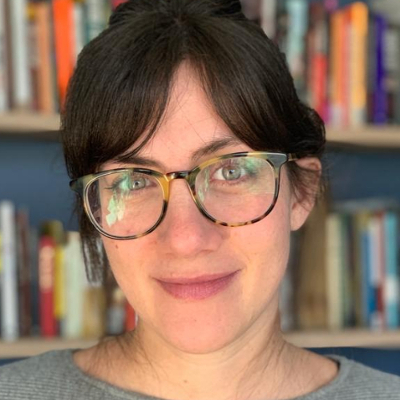Dead Girls, by Argentine writer Selva Almada, chronicles the writer’s investigation into three femicides that occurred in her hometown as she was growing up. Coming back to these cases, she weaves in a personal narrative of the lives of those who survived to tell the story. Just in time to celebrate #WomenInTranslationMonth, in the following conversation, our Translation Editor Denise Kripper and Selva Almada’s translator Annie McDermott speak about the spectres of femicide, the language of gender violence across borders, and the urgency of translating a text as relevant for our times as Dead Girls.
Denise Kripper: Selva Almada won the Edinburgh International Book Festival’s 2019 First Book Award with her debut novel The Wind That Lays Waste, translated by Chris Andrews and also published by Charco Press. What can readers who loved that novel expect to find in Dead Girls?
Annie McDermott: The same incredible control over the language —Selva’s writing always takes my breath away, and the stripped-back, rugged lyricism of Dead Girls will be familiar to readers of The Wind That Lays Waste. And the tenderness, too, towards the people whose stories she tells.
D.K.: Dead Girls opens with an Author’s Note contextualizing, presumably for new English-speaking readers, the experience of growing up in the 1980s in a small provincial town in Argentina. Being born and raised in Argentina myself, I was very familiar with the specificities of the femicides Almada discusses. But I still think the novel very aptly captures pressing female concerns that could be extrapolated to other places as well. You have lived in Brazil, Mexico, and now are based in the UK. How did you relate to these issues?
A.M.: When I first read the book, one of the parts I found most powerful was when the narrator and her friend are hitchhiking as students and end up in a sticky situation. All women have stories of lucky escapes, and all women know what that internal tussle is like: half of you telling the other half to stop worrying, to stop being silly, that everything will be fine, and the other half running through all the grisly things that happen to women every day. And Dead Girls shows why this internal tussle is so fraught and so real: in weaving her own experiences into the stories of women who haven’t been so lucky, Selva demonstrates how all these experiences of gender violence exist on a continuum, and how easily your luck can change. With the spectre of femicide looming large in the book, as it would in your mind if you were hitchhiking with a guy who suddenly turned creepy, what could otherwise be a fairly innocuous anecdote becomes shot through with horror. Lucky escapes, for women, are at once chilling and crushingly mundane, and Dead Girls captures this perfectly.
D.K.: Dead Girls was published originally in Spanish (as Chicas muertas) in 2014, and the Author’s Note in your translation is dated March 2020. This strikes me as eerie considering the spike in domestic violence and abuse during quarantine. Seems like the book might be as relevant as ever?
A.M.: Yes, completely. I’ve been thinking a lot about the revelation the narrator has as a teenager, when she hears about the first murdered girl: “My house, any teenager’s house, wasn’t really the safest place in the world. You could be killed inside your own home. Horror could live with you, under your roof.” The coronavirus lockdowns have been a stark reminder that home is often not a safe place at all, and that awful truth is a very direct link between the 1980s small-town Argentina depicted in this book and the world in 2020.
D.K.: I hesitate to call Dead Girls a novel. At times, it reads more like a chronicle. Sometimes, I even got a “detective” feel when we follow the narrator to different towns as she interviews family members and key witnesses. But it’s also very intimate, as Almada weaves in some of her personal stories. How would you describe this book?
A.M.: You’re right—a lot of interesting things happen with genre in Dead Girls, and I think the way it never quite settles into one genre is very deliberate and very important. Selva talks about this in interviews. She says it was out of respect for Andrea, María Luisa, and Sarita that she didn’t fictionalize their stories into a novel, but that it was also out of respect for them that she sometimes made use of lyrical, poetic descriptions more befitting of a novel—these served, she says, to distance her book from a journalistic account falsely claiming to tell the whole truth, or reveling gratuitously in the gory details. The interplay of genres in Dead Girls seems to be about truthfulness, somehow—avoiding easy classification seems bound up in avoiding easy answers or neat explanations. I don’t know how I’d define the book overall, but I think one of its organizing principles is a kind of truth-telling.
D.K.: In her Author’s Note, Almada says the research for this book took her three years to complete. The writing, only three months. There is a sense of urgency in the writing. How was the translation process? Did you also have to do some research? Did you get a chance to work alongside Almada and ask her questions?
A.M.: I think the translation process was probably the other way around. There was a little research to do, mostly about the Argentine legal system, and the different political parties on the scene after the country’s return to democracy. I had some questions for Selva, too, often about details specific to the region of Argentina where the book takes place. What took up most of my time, though, was painstakingly recreating the urgency of the writing. The prose in the novel is so stark and direct, and the challenge was recreating that in English without sounding clumsy or clinical—there’s a real visceral anger boiling beneath the Spanish, and it had to be felt beneath the English as well.
D.K.: Early on, the book explains it deals with murders at a time when there wasn’t a name for those crimes. They all happened before the word “femicide” entered our vocabulary. I can’t help but to think of the importance of language here, how we can begin to comprehend what happens when we have the language to speak about it. Do you have a sense of how issues of gender violence have been discussed in English, or when the word “femicide” started being used?
A.M.: This is a huge and really fascinating question, and I would love to read the answer of someone who knows much more about it than I do!
I found the moment you mention very interesting to translate, because the word “femicide” entered the vocabulary in Latin America a lot more decisively than it ever has in English, at least in the UK and US, and with more of a sense of before and after. A quick Google search just now, for example, reveals that the vast majority of recent English-language news articles that use the term are about Latin America, with a few about Turkey, India, and South Africa. As if it were something that only happened elsewhere.
In the UK and the US, the term is much less commonly used, which leaves everyday discourse without a name for the killing of women by men. Which is problematic, of course, because it’s harder to fight something there’s no name for. And it’s also strange—why hasn’t the word taken hold here the way it has in Latin America? It was the South African feminist Diana Russell who, in 1976, first gave the term the definition referenced in Dead Girls—“the killing of females by males because they are female”—and apparently this question puzzled her too. This is just me reading Wikipedia, though—I’d love to look into all this properly.
D.K.: Women play an important role in this book. Aside from the actual victims of femicide the book focuses on, there are also mothers and sisters very much involved in the fight for justice. But there’s a generational divide too. The narrator, for example, says she never talked about gender violence with her own mother, yet now writes a book devoted to the topic for others, younger generations. Almada can write because, as she says, she has been lucky, she has survived. The book, in a way, is testimonial. What do you think will happen when this text reaches new audiences in English?
A.M.: It’s interesting—although the narrator says she never discussed violence against women with her mother explicitly, much of her understanding about it growing up came from stories she heard from her mother. So, there are many layers of testimony in the book.
I don’t know what I think will happen, but I hope people respond to the intimacy of the book. I hope it feels close to home—not like an exotic account of a distant time or place, but a story of misogyny and patriarchal structures that exist all over the world. I hope it makes people angry rather than just sad. I even hope people find it beautiful, though that’s not an uncomplicated thing to hope.
D.K.: Some of your published translations have been collaborative projects. Could you talk about the process of working with a colleague translator in what it’s usually seen as a solitary practice?
A.M.: Yes, absolutely! The process has been different each time. When Carolina Orloff and I translated Feebleminded, by Ariana Harwicz, Carolina would do a first draft of each section and then I’d work on that, after which would come long, meandering and often unrepeatably obscene Skype conversations in which we felt our way towards some of the more elusive solutions. Meanwhile, in my current co-translation project—a novel by the Portuguese writer Lídia Jorge, with Margaret Jull Costa—we each work on alternate chapters, making them as polished as we can before sending them to the other person to be edited.
I used to think I’d be too much of a perfectionist and control freak to enjoy co-translating, but I’ve been surprised by how much I love it. I think it’s a really fruitful way to work: if a lot of translation is about attention to detail and flashes of inspiration, you have twice as much of both if you’re working with another person. I think it can also give you the confidence to be freer and perhaps more experimental, because there’s another person backing you up. Plus it means you have someone to gossip about the characters with as you work, and who wouldn’t want that?
D.K.: You’re currently translating Ladrilleros by Selva Almada as well. Can you tell us a little bit about this project?
A.M.: Yes! I could talk about this book for days. Ladrilleros—Brickmakers—begins in a deserted fairground in the early hours of the morning, where two young men lie bleeding to death after a knife fight. They’re from rival brickmaking families in the hot, dusty rural north of Argentina, and through their flashbacks and hallucinations we’re told the story of their families’ feud, and the same-sex Romeo and Juliet-style romance that has led to this tragic end. I often read my translations aloud when I’m working on them, and there are some parts of this book that I could never read without crying—sometimes because they’re so sad, but other times because they’re so beautiful. I think it’s a really incredible book, and I can’t quite believe I was allowed to translate it.
Dead Girls by Selva Almada and translated by Annie McDermott will be published by Charco Press in September 2020.





